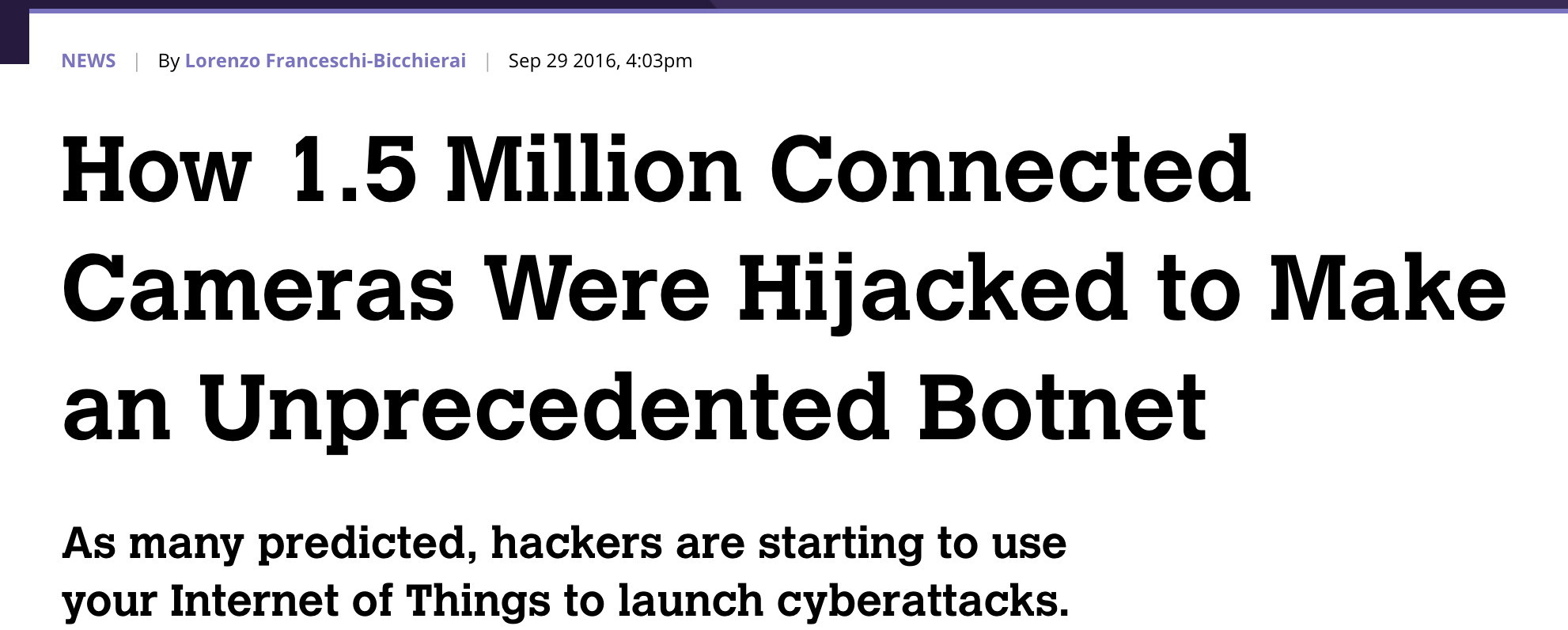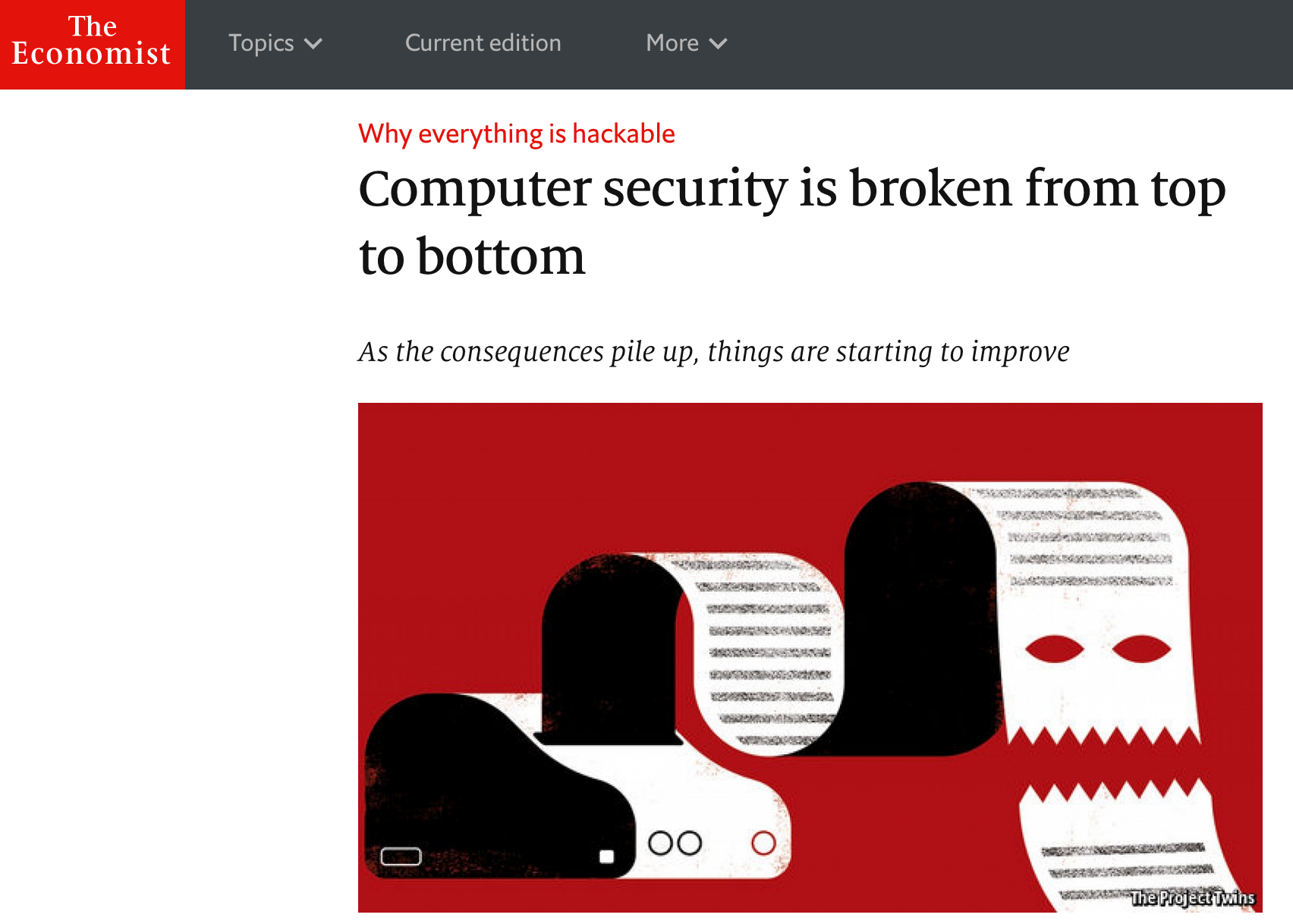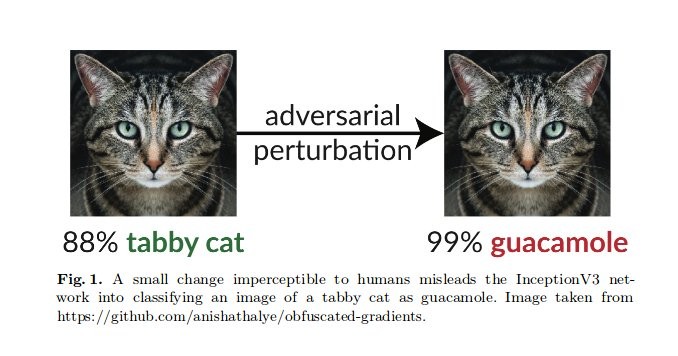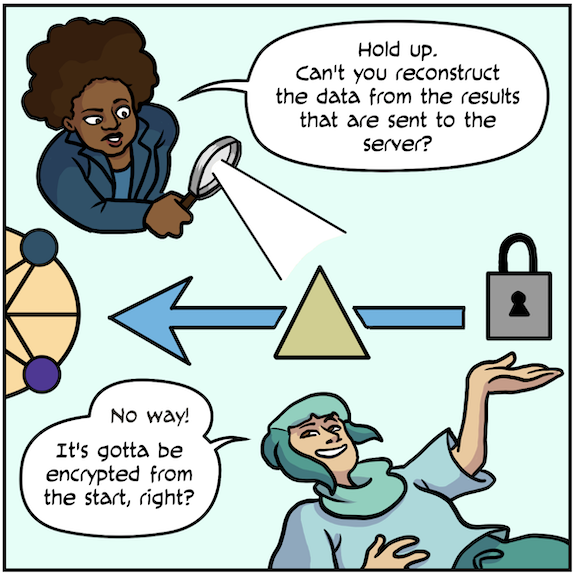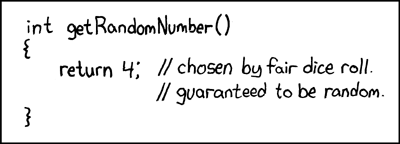7.7 KiB
7.7 KiB
| author | title | date |
|---|---|---|
| Security and Privacy in Data Science (CS 763) | Course Welcome | September 04, 2019 |
Security and Privacy
It's everywhere!
Stuff is totally insecure!
It's really difficult!
What topics to cover?
A really, really vast field
- Things we will not be able to cover:
- Real-world attacks
- Computer systems security
- Defenses and countermeasures
- Social aspects of security
- Theoretical cryptography
- ...
Theme 1: Formalizing S&P
- Mathematically formalize notions of security
- Rigorously prove security
- Guarantee that certain breakages can't occur
Remember: definitions are tricky things!
Theme 2: Automating S&P
- Use computers to help build more secure systems
- Automatically check security properties
- Search for attacks and vulnerabilities
Five modules
- Differential privacy
- Adversarial machine learning
- Crytpography in machine learning
- Algorithmic fairness
- PL and verification
This course is broad!
- Each module could be its own course
- We won't be able to go super deep
- You will probably get lost
- Our goal: broad survey of multiple areas
- Lightning tour, focus on high points
Hope: find a few things that interest you
This course is technical!
- Approach each topic from a rigorous point of view
- Parts of "data science" with provable guarantees
- This is not a "theory course", but...
. . .
Differential privacy
A mathematically solid definition of privacy
- Simple and clean formal property
- Satisfied by many algorithms
- Degrades gracefully under composition
Adversarial machine learning
Manipulating ML systems
- Crafting examples to fool ML systems
- Messing with training data
- Extracting training information
Cryptography in machine learning
Crypto in data science
- Learning models without raw access to private data
- Collecting analytics data privately, at scale
- Side channels and implementation issues
- Verifiable execution of ML models
- Other topics (e.g., model watermarking)
Algorithmic fairness
When is a program "fair"?
- Individual and group fairness
- Inherent tradeoffs and challenges
- Fairness in unsupervised learning
- Fairness and causal inference
PL and verification
Proving correctness
- Programming languages for security and privacy
- Interpreting neural networks and ML models
- Verifying properties of neural networks
- Verifying probabilistic programs
Tedious course details
Lecture schedule
- First ten weeks: lectures MWF
- Intensive lectures, get you up to speed
- M: I will present
- WF: You will present
- Last five weeks: no lectures
- Intensive work on projects
- I will be available to meet, one-on-one
You must attend lectures and participate
Class format
- Three components:
- Paper presentations
- Presentation summaries
- Final project
- Announcement/schedule/materials: on website
- Class mailing list: compsci763-1-f19@lists.wisc.edu
Paper presentations
- In pairs, lead a discussion on group of papers
- See website for detailed instructions
- See website for schedule of topics
- One week before presentation: meet with me
- Come prepared with presentation materials
- Run through your outline, I will give feedback
Presentation summaries
- In pairs, prepare written summary of another group
- See website for detailed instructions
- See website for schedule of topics
- One week after presentation: send me summary
- I will work with you to polish report
- Writeups will be shared with the class
Final project
- In groups of three (or very rarely two)
- See website for project details
- Key dates:
- October 11: Milestone 1
- November 8: Milestone 2
- End of class: Final writeups and presentations
Todos for you
- Complete the course survey
- Explore the course website
- Think about which lecture you want to present and summarize
- Think about which lecture you want to summarize
- Form project groups and brainstorm topics
Signup for slots and projects here
We will move quickly
- First deadline: next Monday, September 9
- Form paper and project groups
- Signup sheet here
- Please: don't sign up for the same slot
- First slot is soon: next Friday, September 13
- Only slot for presenting differential privacy
- I will help the first group prepare
Defining privacy
What does privacy mean?
- Many kinds of "privacy breaches"
- Obvious: third party learns your private data
- Retention: you give data, company keeps it forever
- Passive: you don't know your data is collected
Why is privacy hard?
- Hard to pin down what privacy means!
- Once data is out, can't put it back into the bottle
- Privacy-preserving data release today may violate privacy tomorrow, combined with "side-information"
- Data may be used many times, often doesn't change
Hiding private data
- Delete "personally identifiable information"
- Name and age
- Birthday
- Social security number
- ...
- Publish the "anonymized" or "sanitized" data
Problem: not enough
- Can match up anonymized data with public sources
- De-anonymize data, associate names to records
- Really, really hard to think about side information
- May not even be public at time of data release!
Netflix challenge
- Database of movie ratings
- Published: ID number, movie rating, and rating date
- Attack: from public IMDB ratings, recover names for Netflix data
"Blending in a crowd"
- Only release records that are similar to others
- k-anonymity: require at least k identical records
- Other variants: l-diversity, t-closeness, ...
Problem: composition
- Repeating k-anonymous releases may lose privacy
- Privacy protection may fall off a cliff
- First few queries fine, then suddenly total violation
- Again, interacts poorly with side-information
Differential privacy
- Proposed by Dwork, McSherry, Nissim, Smith (2006)
A new approach to formulating privacy goals: the risk to one’s privacy, or in general, any type of risk... should not substantially increase as a result of participating in a statistical database. This is captured by differential privacy.
Basic setting
- Private data: set of records from individuals
- Each individual: one record
- Example: set of medical records
- Private query: function from database to output
- Randomized: adds noise to protect privacy
Basic definition
A query Q is (\varepsilon, \delta)-differentially private if for every two
databases db, db' that differ in one individual's record, and for every
subset S of outputs, we have:
\Pr[ Q(db) \in S ] \leq e^\varepsilon \cdot \Pr[ Q(db') \in S ] + \delta
